
Dry Lining Manchester | What is dry lining?
What is ?
Dry-lining a wall simply means attaching plasterboard to a wall, or other surface, which gives you a smooth finish to decorate straight away. It’s relatively easier, cheaper and safer to get a good result this way rather than with wet plaster and dry lining is an easier alternative to re-plastering.
“Dry lining is generally faster and easier to install than wet plaster, and generally results in an overall construction that weighs less. Dry-lined walls are easier to change, making buildings more flexible. Dry lining can also be used to increase thermal insulation and to prevent condensation. Additional insulation may be installed behind the plasterboard, and a vapour barrier might also be installed.”
by Drywall Machines Ltd
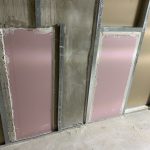
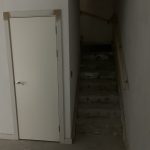
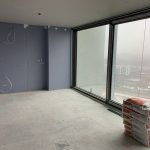
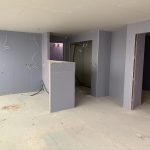
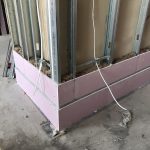
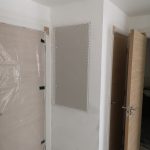
DRY LINING MANCHESTER | All you need to know about Dry Lining in 2021 | What is dry-lining?
Dry lining (sometimes referred to as drywalling) is a system for cladding the internal faces of buildings, such as walls and ceilings. Plasterboard is attached to the internal faces, creating a smooth surface that finishes such as paint can be applied to directly, a ‘wet’ plaster finish is not required. Dry lining requires less technical expertise than traditional plastering and required little water, hence the term ‘dry’ lining.
Plasterboard is available in a wide range of lengths, widths and thicknesses. The larger the plasterboard, the fewer joints, but the harder it is to handle and fit. Plasterboards has a core of plaster which provides good acoustic and fire insulation. Fibres can be added for extra strength and durability. Moisture resistant plasterboards are treated with wax and can be useful when dry lining bathrooms for example.
Plasterboard is available in a wide range of lengths, widths and thicknesses. The larger the plasterboard, the fewer joints, but the harder it is to handle and fit. Plasterboards has a core of plaster which provides good acoustic and fire insulation. Fibres can be added for extra strength and durability. Moisture resistant plasterboards are treated with wax and can be useful when dry lining bathrooms for example.
Plasterboard can be fixed direct to the internal face of a wall or ceiling or can be fixed to a secondary framework of metal or timber attached to the internal face. Each material requires a different fixing technique:
Dabs of adhesive can be used to attach plasterboard directly to the internal face, which sets swiftly.
Plasterboard can be attached to metal or timber walls using nails, this is known as tacking.
Once the plasterboard is in place, a jointing tape can be applied over the joints between the boards and then the tape and recessed screw or nail heads can be filled over with a jointing compound. The joining compound for dry lining is usually supplied as a dry powder which requires water to achieve the correct consistency. The compound should then be allowed to dry and then may need to be sanded with a fine abrasive paper. The surface should then be sealed or primed, and once dry, can be decorated.
Dry lining is generally faster and easier to install than wet plaster, and generally results in an overall construction that weighs less. Dry-lined walls are easier to change, making buildings more flexible. Dry lining can also be used to increase thermal insulation and to prevent condensation. Additional insulation may be installed behind the plasterboard, and a vapour barrier might also be installed.
However, care must be taken to ensure that barriers and insulation are correctly positioned, continuous, and that they do not simply conceal a problem without remedying it. The technique known as ‘dot and dab’ has been particularly criticised for leaving air pockets behind the plasterboard which can impair the performance of the wall.
Dry lining can have less load-carrying capability that traditionally finished walls, which may be a problem for fixing wall-hung cupboards or shelves. It can also be easier to damage.
Lower your heating bills, reduce your Co2 emissions. In recent times, we have become more aware of conserving heat within our homes. This results in warmer, more comfortable dwellings, with greatly reduced oil, gas and electricity bills as well as improving our carbon footprint. At Drywall Machines, we believe in providing an expert internal wall insulation service, using top quality materials and highly skilled tradesmen, giving your home the best possible results.
Internal wall insulation (which also often known as “Dry lining”) can be very effective at reducing heat loss and is still quite popular in homes, even new ones. We feel it’s fair to say that External Wall Insulation is the best form of wall insulation but dry lining has its place also. Sometimes it is unsuitable to insulate externally eg. on a listed building or where stone facing is present. Dry lining will also provide you with a brand new plaster finish on the interior of your home.
Our Services
DRY LINING MANCHESTER | All you need to know about Dry Lining in 2021 | What is dry-lining?
It is VITAL that internal wall insulation is carefully considered and designed before installation in any home.
Internal wall insulation can be the cause of major condensation and dampness issues including aggressive mould growth if proper precautions are not taken during installation. Homes up and down the country are experiencing dampness and mould problems as a direct result of dry lining and there is no real way to remedy the problem without major expense. We urge all customers considering internal wall insulation to consult an expert before proceeding with installation.
Once the plasterboard is in place, a jointing tape can be applied over the joints between the boards and then the tape and recessed screw or nail heads can be filled over with a jointing compound. The joining compound for dry lining is usually supplied as a dry powder which requires water to achieve the correct consistency. The compound should then be allowed to dry and then may need to be sanded with a fine abrasive paper. The surface should then be sealed or primed, and once dry, can be decorated.
Dry lining is generally faster and easier to install than wet plaster, and generally results in an overall construction that weighs less. Dry-lined walls are easier to change, making buildings more flexible. Dry lining can also be used to increase thermal insulation and to prevent condensation. Additional insulation may be installed behind the plasterboard, and a vapour barrier might also be installed.
However, care must be taken to ensure that barriers and insulation are correctly positioned, continuous, and that they do not simply conceal a problem without remedying it. The technique known as ‘dot and dab’ has been particularly criticised for leaving air pockets behind the plasterboard which can impair the performance of the wall. See Dot and dab for more information.
DRY LINING MANCHESTER | Why would insulation cause dampness? | Insulation options
Why would insulation cause dampness?
The more we insulate, the warmer air becomes in our buildings and the colder the wall becomes behind the insulation. Warm air can hold a lot of moisture and when this warm air cools eg. on a now very cold external wall, condensation occurs. This condensation may occur behind internal wall insulation on the surface of the original masonry wall. Over time, this condensation and dampness will lead to mould growth which can grow quite aggressively behind your new insulation. This will eventually surface on the interior of your new, insulated wall. This is a simplified explanation but it gives a good idea to what can happen and is happening on many wall build-ups.
How can I prevent the dampness?
Condensation, dampness and mould can of course be prevented through the correct design and installation of any wall insulation system. Proper vapour barriers must be installed and these must be installed within the layers of insulation at the correct position.
Simply sticking an insulated board to the inside of a masonry wall can be a recipe for disaster, so please be careful and consult an expert before you install.
Comfort Solutions Ireland offer advice, design, condensation analysis and U-value calculations for all our customers and ensure that you won’t have any of these very unwanted problems with dampness and mould. Contact us today to arrange a site assessment and no obligation quotation.
Insulation options
There are various options available when considering internal wall insulation and a suitable option will depend on: the substrate of your own wall; any existing insulation; proposed insulation to be added; proposed U-value to be achieved; and a number of other parameters. A vapour barrier is an important element of any installation and it is critical that this vapour barrier is placed at the correct location within the wall build-up.
Whatever your situation, DrywallMachines Contractors can provide an adequate solution. We can advise you on whether internal wall insulation would be suitable for your building and what methods and materials should be employed. If you are interested, we can site assessment and quotation. We guarantee the best possible finish for your home and re-fit all accessories and fittings after plastering is completed ie. skirting and window boards, curtain rails, pictures etc
Before starting the dry lining installation process, always be very careful when choosing the right plasterboard, bearing in mind that these are available in different thicknesses, sizes and lengths. The plasterboard you opt for must correspond to the stud centers. On the other hand, always consider the place it is going to be fitted, since more humid areas or those more susceptible to water penetration and moisture will involve using moisture resistant plasterboards, which will probably be the best option for your bathroom or kitchen. Also know that dry lining (or creating!) a curved wall for example may involve using thinner plasterboards or if applicable regulation fire rating requires a plasterboard of certain width, try using two thinner plasterboards, rather than only one meeting the requirements.
Dry lining in progress
If you are fixing dry lining to timber or metal frames, this can be done by either tacking, which involves using nails or by screwing which involves using screw fixings, which are, to our humble opinion a better option, since they offer a more stabile support for the plasterboard. Know that dry lining can also be applied to timber ceilings, just like it is fitted onto timber stud walls, of course recognizing some differences inherent to these surfaces, usually involving the fact that plasterboards tend to be massive and heavy, so, since the dry lining process will include lifting up the board to the ceiling, better opt for smaller, lighter boards. Also proper placement of a few fixings will hold the plasterboard in place and ease your work, enabling you to rest your arms when installing.
After choosing the right plasterboard and performing the needed measurements and cuttings, it’s time to get on with the work and fit the plasterboard onto your timber wall. We advise that you start from the edges in, since starting from the middle of the wall may cause additional problems and unnecessary cuts, if the plasterboard is not plumb. The plasterboard can be fixed to the wall by tacking the nails (preferably 40mm nails) or using screws to tighten the board to the wall (preferably 25mm long). First fixings should be tacked from the centre outwards and not too much apart (there are usually evenly spaced fixing marks on the face of the board), since these will hold the board and allow you to carry on with your work – place them too far apart and you will constantly have to hold the board. The rest of the boards should be fixed 200 mm (when using screws) or 150 mm (when using nails) around the stud. When placing the fixing, make sure not to go too far, since this might damage the paper envelope.
Dry lining essential tools
When dry lining a masonry wall, the technique used is the so called “dot and dab” and is usually a bit more complex than dry lining a timber wall. It involves using a drywall adhesive which is applied to the wall with a trowel when the plasterboard is tamped back onto the adhesive dabs and checked horizontally and vertically using a level for the perfect alignment.
Knowing basic dry wall methods and materials is important due to their advantages and benefices including the eco-friendly manufacturing process, flexibility, easy transportation and installation, space saving and thermal insulation performance.
